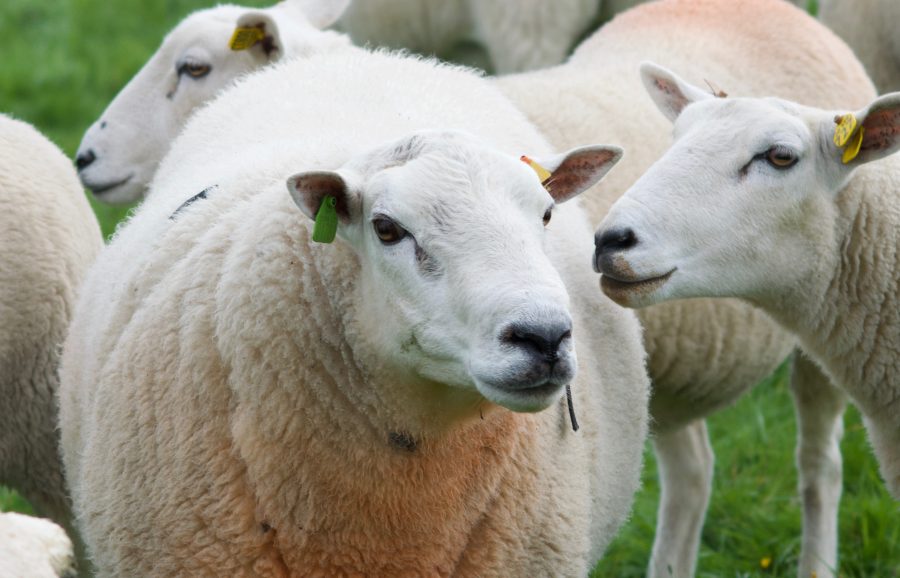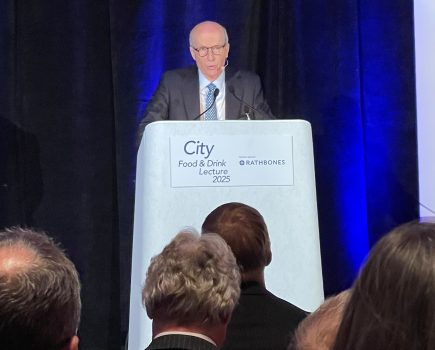By the time this goes to press, the tups will either be in or will already have fulfilled their annual function; generally, bolstered in part by a decent autumn flush of grass this season, the ewes have been in fairly good condition joining the ram.
The autumn has so far been mild, though quite wet – very wet for some – although, for us at least, ground conditions have remained fairly firm, which has made getting around and moving stock into place somewhat easier that it might have been. The mild weather has produced a bit of late fly strike which has caught out some, but I suspect it is another insect-borne problem that has given much greater concern – the threat posed by BTV3; this current reincarnation of bluetongue and the uncertainty as to how the disease will, or will not, progress. The consequential imposition of restricted zones across much of the South East corner of the country has already generated significant problems, with a substantial and negative impact on the autumn sheep trade.
Last autumn’s incursion of BTV3 into the South East was dismissed by some as a bit of media hype. It’s true no active cases were identified – all were discovered via antibodies picked up on routine surveillance – but that said, the presence of antibodies does indicate that there had at some time been some BTV3 infections that had either not been observed or simply not reported; both give some justifiable cause for concern.
Considering the devastation that the disease has generated by rapid spread through northern Germany, Belgium and the north of France this year, we have been fortunate; but it is early days. Hopefully as we progress into winter, midge activity will subside and the risk will diminish, but checking stock is still imperative.
We know that BTV3 has been circulating this season, with several active cases reported in the region, but just how widely we really don’t know. It does not appear to be widespread, but the bigger picture is unclear, a situation not helped by the dearth of information issued by the Animal and Plant Health Agency (APHA), which seems to have been largely limited to details regarding the extent of temporary control and restricted zones (RZ). The lack of meaningful information has been a matter of concern for producers.
Where cases have been reported, there has been little detail; knowing whether a case has been identified via routine surveillance or as an active case will have a significant impact on how producers react and respond, as would some details of location. Knowing that there is an active case just down the road adds a sense of urgency that is absent when the only information provided is that a case, which may or may not be active, has been identified in, say, Kent.
There also seems to be some confusion over movement restrictions on premises outside any RZ. Some have been completely locked down, unable to move sheep in or out at what is a critical time of the year, with no indication as to when restrictions will be lifted, simply as a result of antibodies (not infection) being picked up on routine surveillance from a single sheep moved in from an area which has subsequently become an RZ.
The converse of this has been a few producers that have had active cases positively identified but no order to cull given, so no compensation, thus leaving owners to decide either to maintain treatment, knowing that there is a viraemic animal on the premises, or to cull with no compensation. This is totally unacceptable penny pinching on the part of the authorities, particularly when one considers that DEFRA accumulated a £358 million underspend over the past three years.
We do have some reassurance offered by way of vaccinations. Three types, not yet authorised due to lack of UK testing (another Brexit benefit?) have been granted (temporary) licences should we choose to use them. None offers 100% control, none will stop infection, but indications are that they will (one seemingly better than others) significantly reduce the severity of symptoms and levels of mortality. They are, at close to £4 a dose, not cheap, but the cost of losing, say, one good ewe could, including disposal, exceed £200.
Whether or not producers vaccinate depends on individual attitudes to risk; winter is approaching, and a cold spell will dramatically reduce or possibly stop midge activity, and without midges there is no transmission. Conversely, if we have yet another mild and open winter some level of midge activity may persist throughout, as happened last winter; remember Schmallenberg and the impact on some producers in the region.
Personally, we have decided to vaccinate, one of the main considerations being welfare. We hope BTV3 does not become an issue, but if the worse should arise, anything that helps reduce symptoms will provide a welfare benefit, plus of course reducing mortality.
After the initial desire to rush in and vaccinate everything, we have decided, rightly or wrongly, on a rather more considered approach. All youngstock will be vaccinated now, but the ewes and tups will wait until after tupping and implantation in order to secure pregnancies. This is based on some concern as to the possible negative impact the vaccine and possible contraindications may have on fertility, which may persist for six weeks or so, particularly in the rams. In addition, it seems logical to delay vaccinating the breeding flock until December or early January, which should deliver maximum protection in the spring.







